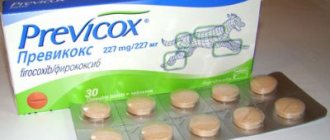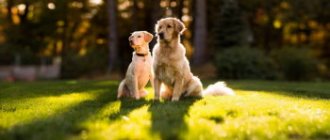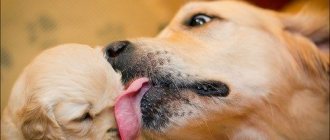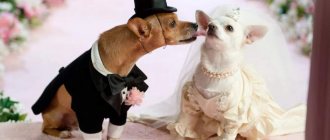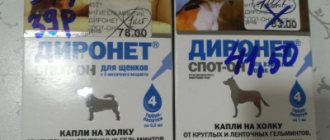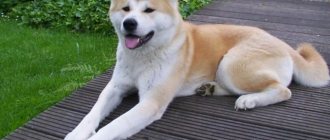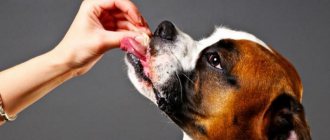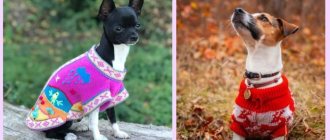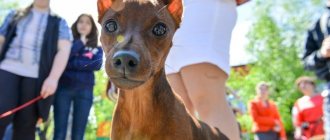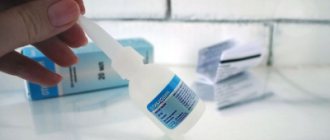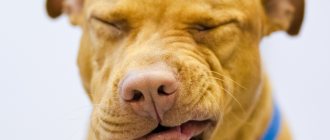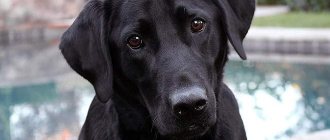The wolf's claw is a rudiment in a dog that represents the fifth toe. Dewclaws are not a pathology, but a norm of physiological development. Normally, all dogs have five toes. And just the fifth finger is a sign of rudimentary atavism, inherited by four-legged pets from their distant ancestors. Amputation of the dog's fifth toes is required if your pet participates in exhibitions or competitions. Then, according to the breed standard, you can decide on surgical amputation.
Features of the structure of a dog's paw
Normally, a dog's paw consists of four toes with soft pads and claws. The pads have a shock-absorbing function, they reduce the load when running and walking. Their skin is rough, which provides the animal with stability on slippery surfaces. In working dogs, due to prolonged exposure to fresh air, the surface of the pads becomes rough.
Dewclaws in dogs – pathology or normal
When walking, the main load falls on the dog's fingers. They cannot move them because the space between the fingers is too small.
Depending on the shape of the paw there can be three types:
- Felines are distinguished by their compact size and round shape. These paw shapes are typical for dogs of large breeds, for example, Spanish mastiff and husky.
- Hare feet are elongated, with long ring fingers. This structure allows you to quickly develop speed.
- Webbed - this shape is typical for hunting dogs, for example, the Jack Russell Terrier.
Dewclaws in puppies raise many questions among owners.
Structure of a dog's paw
What can a dog's paw do?
The functions of dog paws can be analyzed using the example of its components:
- Claws. Compared to human nails, a dog's or even a puppy's claws are thicker and stronger, making it easy to dig holes and maintain stability. Its direct purpose (killing prey) is rarely used, since the role of a companion does not imply an independent search for food.
- Pads. Indispensable as:
- Shock absorbers. They reduce the load on bone tissue, help with sudden braking, maintain stability and protect joints from wear.
- Hot water bottles. The presence of blood vessels protects against hypothermia, but makes the animal vulnerable to hot asphalt.
- Sweating regulator. Sweat glands, located in the inner layer, moisturize the skin and allow you to mark objects and territory.
- Fingers. They perform the function of human heels and take the main load during movement. The finger located next to the wrist is called the dewclaw and is used for grasping and holding objects.
A dog's paw consists of claws, toes and pads.
Reasons for the appearance of an extra finger
How many toes does a cat have on its hind and front paws?
The appearance of an extra toe on a dog's paw is called atavism. This phenomenon means that the animal's body contains characteristics of all the species that were involved in breeding. The fifth rudiment is a sign left over from a close blood ancestor; it indicates a connection with the wolf.
For your information! Most hunting breeds were crossed with wolves, hence the origin of the fifth toes. For certain breeds this is a natural phenomenon.
Scientists still cannot answer why in one and the same breed one puppy has a dewclaw, and the second does not. This is a dominant trait: if a male has five fingers and a female has four, then the puppies from such a marriage will have five fingers. This phenomenon is most often observed in German Shepherds.
An additional vestige indicates a connection with wolves
Could there be as many as six of them?
There are situations when puppies have two dewclaws at once. The owner must decide for himself whether they need to be removed. Everything will depend on whether they interfere with the animal.
Dog breeds in which dewclaws are not considered a defect
Dog Wheelchair for Hind Limbs
The fifth claw in sporting dogs, as well as in show breeds, is considered a big drawback. The Jagdterrier or dachshund will be removed from the exhibition, and sporting dogs will not be allowed to compete. Such a claw itself interferes with regular grooming. For small dogs such as Spitz, Yorkie, Terrier or Chihuahua, an extra toe will be a big nuisance.
Important! Before removing an extra toe, you should consult a veterinarian. There are a number of breeds for which the dewclaw is a sign of purebred. These breeds include: French Shepherd, German Laika, Briard and Pyrenees.
Diagnosis
As a rule, a differential diagnosis is made first. This is a complete list of diseases with similar symptoms. In our case, it includes: the possible presence of fungal and bacterial infections, drug dermatitis, vasculitis and autoimmune diseases.
Then, after a series of examinations, we were given a final diagnosis: Lupoid onychodystrophy.
Why exactly this, and why, say, not a fungal infection or injury? Yes, because with injuries, the claw plate grows normally and the lesions will not be so generalized (spreading over all limbs). And a fungal infection does not cause rejection of the nail plate.
Well, the surest way to make a final diagnosis is histopathological examination of the material (amputation of the phalanx of the finger along with the claw). As a rule, owners of four-legged animals rarely give their consent to this type of research.
Is it necessary to fight wolf claw in dogs?
Since dewclaws in dogs are not pathological, their removal is not necessary. Veterinarians may recommend surgery to avoid possible complications:
- injury to the puppy’s paw when running and walking;
- inconvenience during hygiene procedures, cutting, combing, washing your pet;
- ingrown nails into the skin.
Experts recommend removal without fail if the pet develops paw diseases. These include:
- tissue death - necrosis;
- gangrene of the paw;
- osteosarcoma.
Removal is also carried out if the dog has a serious injury to the dewclaw.
There are two groups of dogs that require mandatory surgery:
- Hunting, due to the extra shoot, it is very difficult for such an animal to move in forests and through thickets. The finger will constantly cling to branches and bushes and get damaged on the grass. This not only slows down the hunting process, but also causes pain to the animal.
- Show breeds: in this case, the removal of the rudiment is carried out in puppies.
Important! Veterinarians recommend removing dewclaws from puppies before seven days of birth. During this period, they will not feel severe pain, and the recovery process itself will pass quickly and without complications.
The removal procedure is performed using surgery. The recommended age is up to seven days, but operations are also performed on older dogs. Small puppies are given local anesthesia and sutures are placed, which subsequently dissolve on their own.
Removal surgery in dogs over 12 weeks of age is performed under general anesthesia.
If removal is not performed before the age of one week, then the operation can only be performed when the dog is more than 12 weeks old. This should only be done by an experienced veterinarian under general anesthesia.
After cutting, a recovery period is necessary. The dog is given a soft bandage on the damaged area. It is important to ensure that the dog does not tear off the stitches while licking the wound.
Treatment of joint dysplasia
At the initial stages of joint dysplasia, conservative treatment is prescribed. It is aimed at reducing the load placed on the musculoskeletal system and muscular frame of the animal, especially in young pets.
Be sure to monitor the dog’s activity by type (running, jumping, etc.), as well as duration. The best exercise is slow walking, using a leash is recommended. The duration of the first walk is 5 minutes, then gradually increases.
Therapeutic treatment includes:
- taking chondoprotectors (drugs aimed at restoring cartilage tissue),
- prescription of painkillers,
- restriction in physical activity,
- adding feed additives,
- weight loss (if you are overweight).
Regular monitoring of the pet's condition during conservative treatment is necessary. On the recommendation of a doctor, vitamin and mineral support is provided for an animal whose body is depleted and weakened as a result of joint dysplasia.
Surgery
If conservative therapy does not produce sustainable results and the progression of the disease in the dog continues, surgical treatment is prescribed. The form of surgical intervention is determined by a specialist, taking into account the weight of the pet, the stage of development of dysplasia and the type of joint deformity.
3 types of surgical treatment that can be prescribed:
Resection arthroplasty
Indications: animal weighs no more than 30 kg, has symptoms of osteoarthritis, flattened femoral head. During this intervention, the flattened femoral head is removed. After the operation, injury to the acetabulum stops, and therefore pain and discomfort disappear.
Triple pelvic osteotomy
The intervention is aimed at changing the angle of inclination of the acetabulum, which is why the development of the disease stops. However, this method has limitations: it is prohibited in the presence of complications in the form of osteoarthritis.
Intertrochanteric osteotomy
It is used for the surgical treatment of individual cases of hip dysplasia, if the cause of its development is deformation of the hip. It has a minimum of contraindications and is characterized by a shortened rehabilitation period.
Main causes of toe fractures in dogs
An extra claw on the hind paw most often interferes with the animal. It is mobile because it is not held together by cartilage and muscles. Because of this, injury often occurs. The dog cannot retract such a claw; he constantly clings to sticks, branches, bushes, and foliage. If the pet is active, this physiological phenomenon causes him a lot of inconvenience. Therefore, it is recommended to remove the extra finger.
It is not uncommon for dogs to break their appendix for various reasons. Often injuries occur due to the fault of the owners themselves. For example, a heavy object was dropped on the dog’s paw or stepped on, or pinched by a door. Most often, small breed dogs suffer from this.
Injuries that result in finger fractures occur in overly active pets. This is especially true for young puppies who actively run around in nature. They can get caught on a bush, fall into a hole, or get their paw caught between the roots. When you try to pull it out, your finger may turn, which will lead to a fracture.
Finger fractures cause severe pain to your pet
Dogs often suffer fractures during play or fighting due to bites. Even when just playing, dogs can bite each other's paws, which can lead to fractures.
Symptoms
Lupoid onychodystrophy develops rapidly. In just 2-3 weeks, all the claws of the quadruped are damaged. One or two, or maybe several of the following symptoms of the disease may be observed:
- As a rule, it all starts with damage to one or two claws. The dog licks and chews the claw area.
- If a quadruped has light-colored claws, a change in color can clearly be seen on them: the appearance of spots, darkening or redness.
- The claws become brittle and brittle. Any mechanical impact instantly leads to damage. Just like us, pet owners associate this with common trauma. Lameness associated with pain appears.
- Claw damage occurs on all four limbs at once. That is why lupoid onychodystrophy in dogs is called symmetrical.
- The claw plate is torn away from the claw bed. The claws peel and crack. Traumatization of the claws can often cause the development of paronychia (inflammation of the periungual fold). Redness and swelling appear. The base of the diseased claw may bleed. Damaged paws hurt and itch.
- In some cases, a secondary bacterial infection and the appearance of pus may occur.
- Over time, the claws begin to fall out one by one. Overgrown claws are weak, brittle, discolored and deformed. If the disease is left to chance, the newly grown weak claws will fall out again and again.
Symmetrical lupoid onychodystrophy in dogs: photos of possible changes in the claws affected by this disease.
Lupoid onychodystrophy affects only the limbs, causing a lot of trouble and pain. Otherwise, if I may say so, sick dogs are quite healthy.
Caring for your dog's dewclaws
If the owner does not plan to remove the excess growth on the pet’s paw, it is necessary to provide it with proper care. It is necessary to trim the claw regularly. When visiting the groomer, you need to indicate that the dog has a fifth claw, so that the specialist does not accidentally cause damage. You need to constantly check your finger, as it is injured more often than others.
A dewclaw is not a pathology, but it can cause inconvenience and discomfort to your pet. Therefore, each owner must decide for himself whether removal surgery is required or not.
Fungal infection
As evidenced by global veterinary practice, fungal infection is perhaps the most serious disease of the claws in principle. Diagnosing and treating such diseases is not easy.
Symptoms
When claws are affected by pathogenic fungi, the symptoms are blurred:
- The claw may become “cloudy,” porous, and fragile.
- The clinical picture is much clearer on the skin of the interdigital spaces and paw pads. Strange sores, growths, and bald areas of regular, round shape appear.
- There is a strange smell coming from your pet's paws. In some diseases (malasseziasis) it can be similar to the aroma of old cheese.
- Severe itching is often observed.
Treatment
Treatment consists of prescribing antifungal drugs. Without them, it is impossible to cope with pathogens. If necessary, the veterinarian will excise dead tissue eaten by fungi.
Antifungal drugs
The following antifungal drugs may be used:
- Itraconazole . It is very effective, has the lowest possible toxicity, but is extremely expensive.
- Fluconazole. Quite safe for the dog itself, but not very effective against some pathogenic fungi.
- Terbinafine . Very effective and quite safe, but not certified for veterinary use.
All of the above drugs can be prescribed and dosed only by a veterinarian. If used incorrectly, a dog can easily be poisoned.
